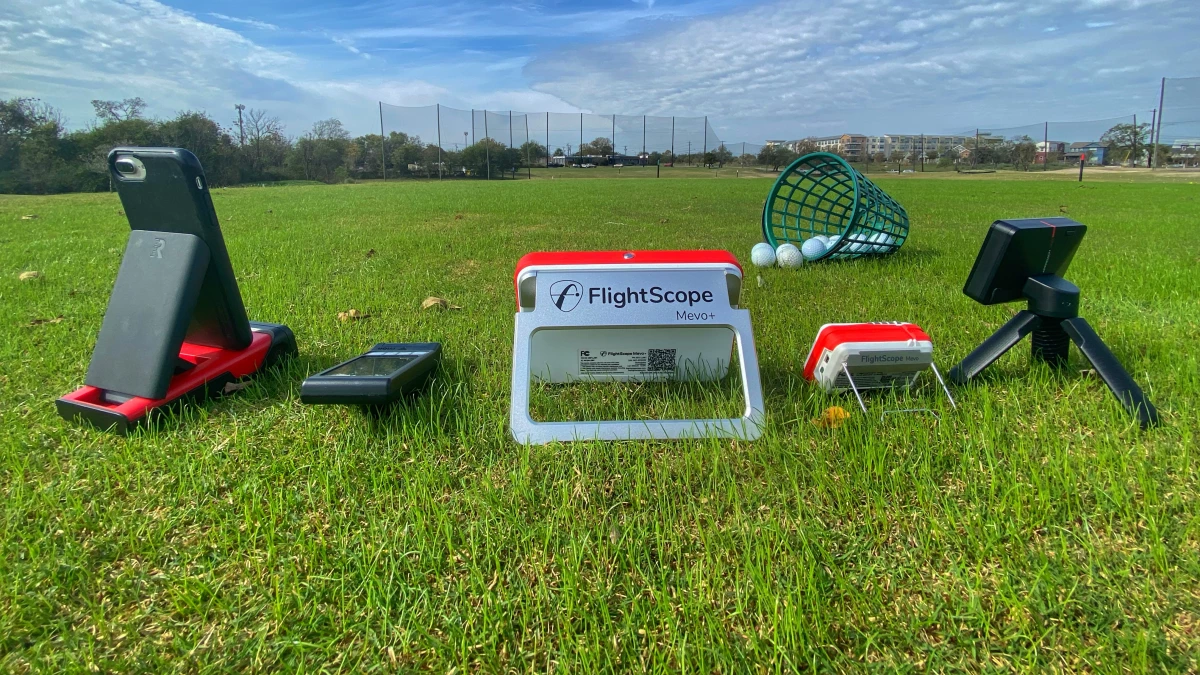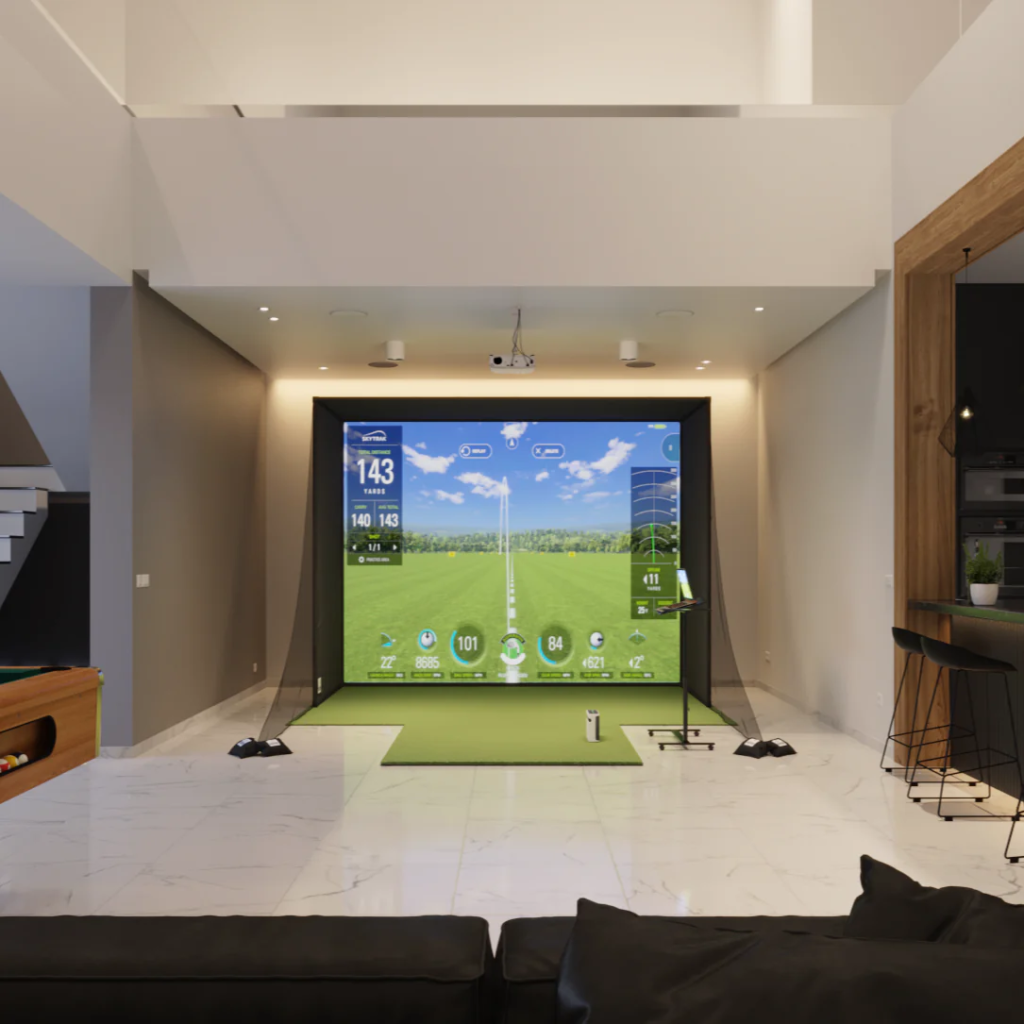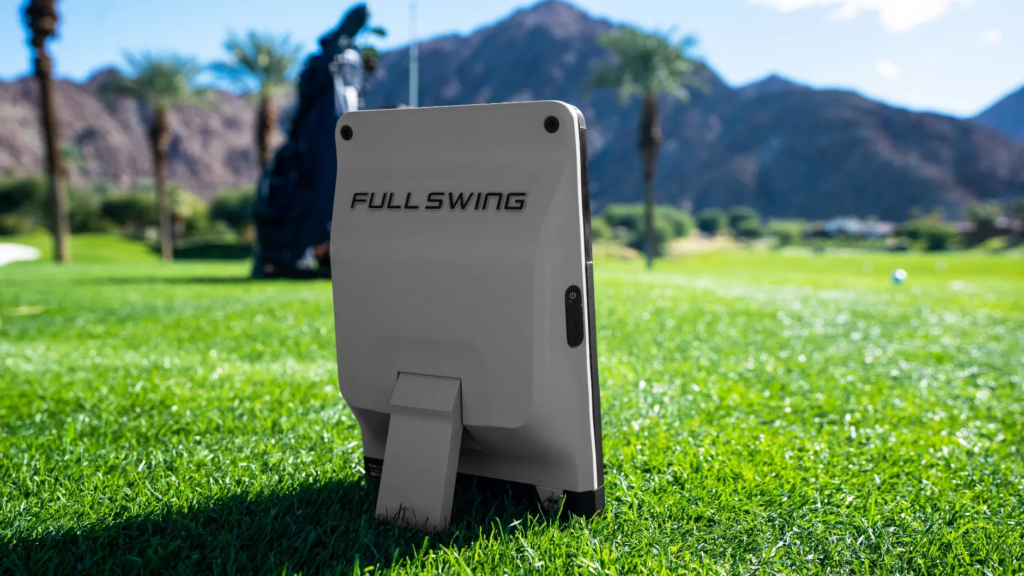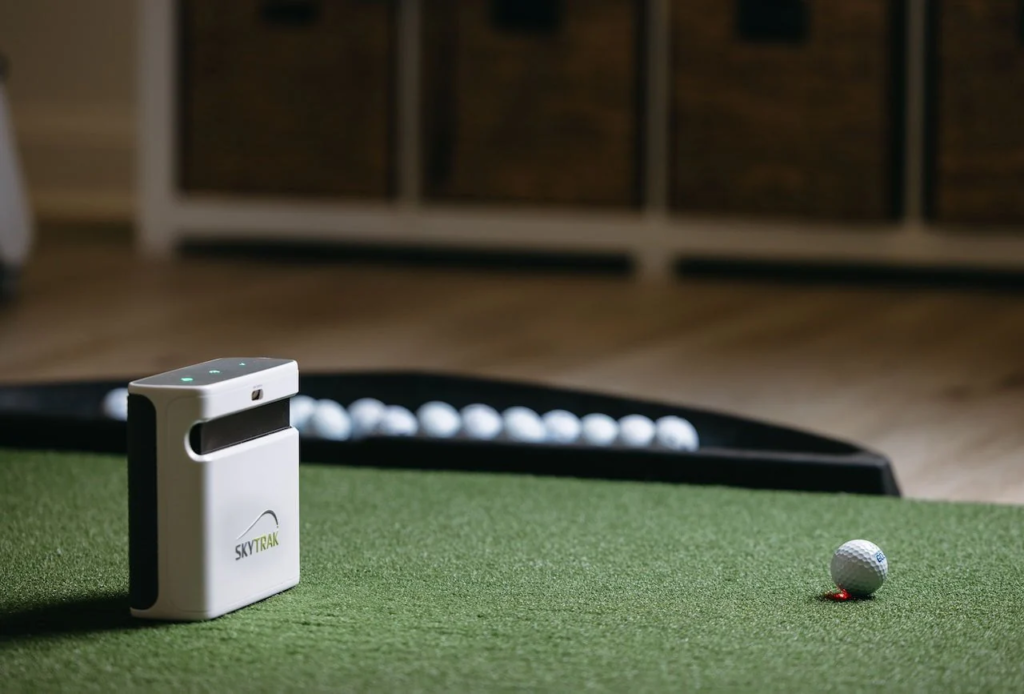Physical Address
304 North Cardinal St.
Dorchester Center, MA 02124
Physical Address
304 North Cardinal St.
Dorchester Center, MA 02124

What is a golf launch monitor? It’s a technology-driven tool that measures ball speed, spin rate, launch angle, and carry distance to analyze your golf shots.
Using radar or high-speed cameras, it tracks how the club and ball interact at impact, giving instant feedback that helps golfers refine their swing and make better decisions on the course.
Launch monitors are no longer just for tour professionals—they’ve become a game-changer for coaches, club fitters, and everyday golfers looking to improve. Whether you’re dialing in distances, testing new equipment, or setting up an indoor simulator, a launch monitor provides real-time, measurable insights that can take your game to the next level.
Launch monitors work by using radar-based tracking or high-speed cameras to analyze ball flight. The type of technology a launch monitor uses determines where it performs best, what kind of data it captures, and how precise its measurements are.

Precision meets innovation with the Trackman iO, delivering pro-level accuracy and immersive simulation. Built for serious golfers, it offers unmatched data tracking and a seamless indoor experience.
Radar-based monitors rely on Doppler radar to track the movement of the golf ball after impact. These devices sit behind the golfer and send out radio waves that bounce off the ball. By analyzing the return signals, they measure ball speed, spin rate, launch angle, carry distance, and trajectory.
Because radar systems track the entire flight of the ball, they work best in outdoor settings where there’s enough space to see the ball’s full path. Devices like TrackMan and FlightScope X3 are widely used by tour players, coaches, and club fitters who need complete ball-flight data to analyze performance. These systems are ideal for driving range sessions, fitting studios, and competitive practice where players need to see exactly how their shots behave in real conditions.

Dialed-in accuracy and tour-level data make the GCQuad a go-to for serious golfers. Whether dialing in distances or refining swing mechanics, it delivers the insights players need to improve.
Camera-based launch monitors, also called photometric systems, use high-speed cameras to capture detailed images of the ball and club at the moment of impact. Instead of tracking the ball through the air like radar, these systems analyze impact conditions to calculate ball flight and shot data.
Because they don’t require long ball flight, camera-based systems are ideal for indoor use. Devices like the Foresight Sports GCQuad and SkyTrak+ are commonly found in golf simulators, fitting bays, and coaching facilities, where players need accurate data without requiring large hitting areas.
One of the biggest advantages of camera-based systems is their precision in club data measurement. The GCQuad, for example, provides detailed club path, face angle, impact location, and loft/lie measurements, which are essential for club fitting and swing refinement.

Serious golfers looking for precision and reliability will appreciate what the Full Swing KIT brings to the table. With tour-level accuracy and advanced data tracking, it’s built to perform indoors and out.
Some advanced launch monitors combine both radar and camera technology, giving golfers the best of both worlds. These hybrid systems track ball flight like a radar unit while also capturing detailed impact conditions like a photometric system.
For example, Full Swing KIT and Bushnell Launch Pro use both tracking methods to improve accuracy across different environments. These systems are particularly useful for golfers who practice both indoors and outdoors, as they adjust to different settings while maintaining precise shot analysis.
Understanding the differences between radar and camera-based launch monitors helps golfers choose the right system for their needs. Whether tracking full ball flight at the range or measuring club performance in an indoor simulator, the right technology ensures that every swing provides meaningful, actionable feedback.

A golf launch monitor captures precise shot data to help golfers analyze their swings and make measurable improvements. The most important metrics it tracks include:
More advanced launch monitors go beyond basic ball flight data by measuring club path, angle of attack, face angle, and impact location. These insights help golfers fine-tune their swing mechanics, improve accuracy, and develop more consistency in their ball striking.
By understanding these key numbers, golfers at every level—from professionals to weekend players—can practice more effectively, make smarter equipment choices, and lower their scores.
Launch monitors aren’t just tools for improving swings—they’re changing the way golfers train, compete, and even do business. Whether it’s a tour professional dialing in their distances, an amateur looking for consistency, or a business owner using one for revenue, launch monitors provide real-time, data-driven insights that go beyond just measuring shots.
Bryson DeChambeau relies on the Foresight Sports GCQuad to push the limits of his game. Known for his scientific approach to golf, he uses the GCQuad to track ball speed, launch conditions, and impact location with extreme precision. This data allows him to fine-tune his single-plane swing, optimize spin rates, and maximize his clubhead speed, which often exceeds 200 mph. He doesn’t guess—he uses numbers to make measurable improvements.
Tiger Woods, one of the greatest golfers of all time, endorses and trains with the Full Swing KIT. Designed with Tiger’s input, the Full Swing KIT uses radar technology to track key swing data with high-level accuracy. Whether he’s working on distance control, ball flight, or shot shaping, Tiger depends on this technology to keep his game sharp. His endorsement alone speaks to its elite-level performance.
I use the Foresight Sports GCHawk for my business, and it’s more than just a golf tool—it’s a revenue-generating machine. The GCHawk’s overhead-mounted design makes it perfect for my indoor facility, offering seamless tracking for both right- and left-handed players. What sets it apart is its multisport capability.
Beyond golf, my clients can enjoy soccer, baseball, and other interactive sports, which brings in a broader audience and increases business opportunities. By offering more than just golf, the GCHawk attracts families, corporate events, and casual players, all of which drive revenue and make my facility more profitable.

The SkyTrak+ SwingBay Golf Simulator Package offers top-tier accuracy and an immersive experience, pairing the upgraded SkyTrak+ launch monitor with a premium enclosure for a complete at-home setup.
A launch monitor and a golf simulator are often used together, but they serve different purposes. While both provide valuable insights, they are not the same in terms of function and experience.
A launch monitor is a data-gathering tool that tracks ball and club performance. It measures critical shot metrics like ball speed, launch angle, spin rate, and carry distance, allowing golfers to analyze and improve their swings. These devices are used by professionals, instructors, and club fitters to fine-tune performance through measurable feedback.
A golf simulator, on the other hand, is a full system that includes a launch monitor along with simulation software, a hitting mat, a projector, and a screen to create a virtual golf experience. It allows golfers to play full rounds on famous courses, practice in realistic conditions, and enjoy an immersive indoor golf environment.
A launch monitor can be used on the range or indoors with a net to collect shot data, making it a versatile tool for both outdoor and indoor practice. A golf simulator, however, transforms a space into a digital golf course, allowing players to work on their game while enjoying the feel of real-world golf without stepping outside.
While both are valuable, the launch monitor is focused on performance analysis, while the golf simulator adds entertainment and realism. Many golfers use both together to combine detailed swing data with a fun and engaging practice experience, but choosing the right setup depends on individual goals.
Those looking for serious game improvement may prioritize a high-accuracy launch monitor, while those wanting an at-home golf experience may opt for a complete simulator package.
The best launch monitor depends on where you plan to use it and what data matters most to your game. Some models excel in outdoor environments, tracking full ball flight, while others are designed for indoor use, capturing precise club and impact data.
For outdoor golfers, TrackMan and FlightScope X3 are top choices. These radar-based systems measure ball flight from launch to landing, making them ideal for players who practice on the range or course. However, because they require ample space to track shots accurately, they aren’t the best fit for small indoor setups.
For indoor golfers, Foresight Sports GCQuad and SkyTrak+ provide exceptional accuracy. These camera-based launch monitors focus on impact data rather than full ball flight, making them well-suited for golf simulators, teaching studios, and home practice setups. Because they don’t require long ball flight to deliver precise results, they are the preferred choice for players with limited space.
Golfers looking for versatility may prefer portable models like the Garmin Approach R10 or FlightScope Mevo+. These launch monitors are designed for both indoor and outdoor use, offering a balance of affordability and functionality. While they may not provide the same level of accuracy as high-end models, they deliver solid shot data for golfers who want reliable feedback on their performance.
When selecting a launch monitor, consider accuracy, ease of use, and compatibility with simulation software. Many models integrate with E6 Connect, The Golf Club 2019, and GSPro, allowing players to combine real-world shot analysis with immersive virtual golf experiences.

Launch monitors have completely changed the way golfers train, learn, and improve. Instead of relying on feel and guesswork, players now have access to real-time shot data that provides measurable insights into their swings.
For professionals, launch monitors help dial in distances, optimize spin rates, and fine-tune equipment. Even the smallest changes in loft, lie angle, or ball position can affect performance, and launch monitors provide the hard data needed to make informed adjustments.
For amateurs, launch monitors provide a deeper understanding of their swing tendencies. Seeing data on carry distances, spin rates, and ball flight patterns helps players focus on specific areas for improvement, leading to better results in less time.
As technology continues to evolve, launch monitors are becoming more advanced and accessible. What was once exclusive to tour players and elite training facilities is now available to golfers at every skill level, making data-driven improvement a reality for everyone.

A golf launch monitor is more than just a training tool—it’s a way to measure, refine, and enhance your game. By providing real-time feedback on ball flight and club performance, these devices take the guesswork out of improvement and allow golfers to make smarter, data-driven decisions.
The right launch monitor depends on how and where you plan to use it. Whether you’re hitting balls on the range, setting up a home simulator, or working with a coach, a launch monitor delivers the insights needed to get better, faster.
As golf technology continues to advance, launch monitors will remain an essential part of modern training, helping golfers at all levels play smarter, improve faster, and enjoy the game even more.